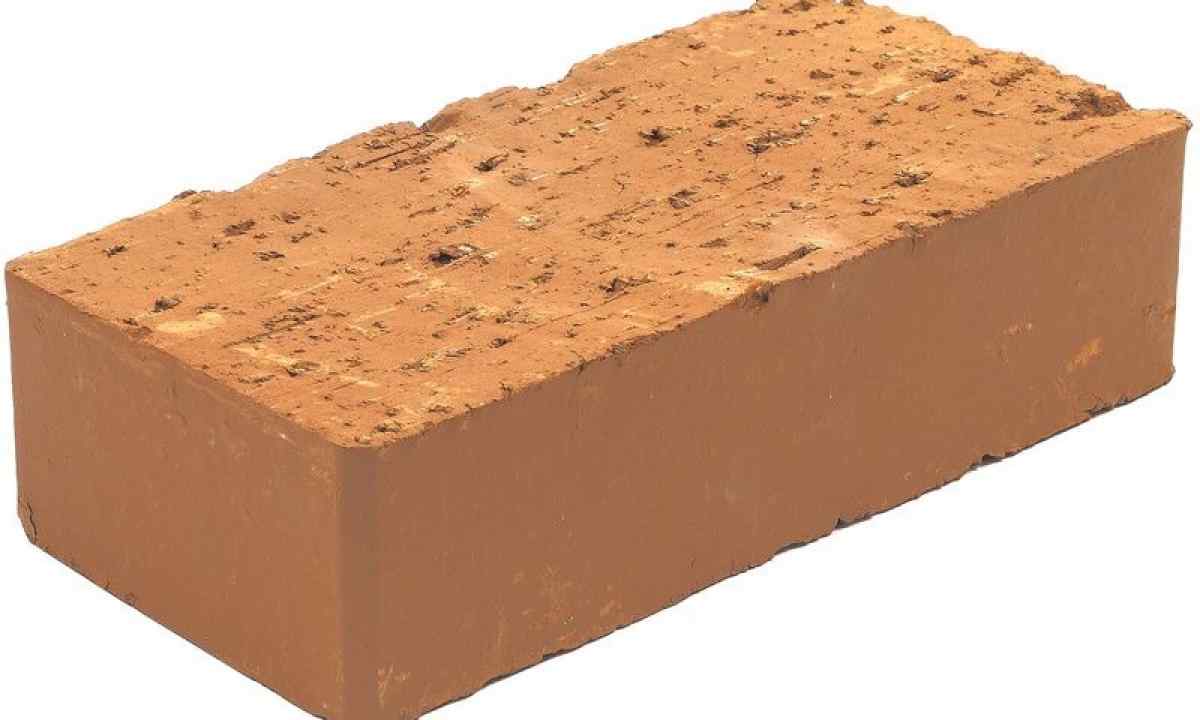The ceramic brick is construction material of characteristic red color which is made of clay. Experts separate ceramic brick in form, availability of emptiness and engineering properties. It is used both for construction, and for facing and finishing of rooms - both inhabited, and office. However, to achieve the necessary effect, the brick needs to be chosen correctly, having carefully studied all available types, the sizes and ranges of application.
The ceramic brick is quite widely applied in construction. It is connected with its universal technical characteristics which allow it to be suitable and for basic construction jobs, and for finishing.
Features of ceramic brick
The ceramic brick has several different types: - construction;
- hollow; - facing (or front).
Very often the mixed types of ceramic brick meet. So for example, the front option of brick can be both hollow, and corpulent.
Quite often ceramic brick is used in private construction for arrangement of oven space, i.e. that part of wall which directly contacts to naked flame. In this case often say that used shamotny brick. Production of ceramic brick is caused by state standard that is guarantee of lack of defects by production. The ceramic brick surely has to correspond to the following parameters. The moisture pick-up by brick no more than 8% for corpulent and 6% for hollow is allowed. The correct size is also very important. The standard ceramic brick has such data: 250 X 120 X 65 mm.
It should be taken into account that in accordance with GOST producers are able to afford to release brick of irregular shape in addition.
Exterior also has to conform to the standard. On it one surface has to be ridge, another - rectilinear. The ceramic brick surely has to be ecologically safe and also does not may contain inclusion of lime and stones. If such impregnations appear, under operating conditions and moisture absorptions they inflate, as a result the brick spoils, bursts and breaks. The weight of one ceramic brick has to equal 4.3 g. It is easily possible to determine quality of roasting of brick by exterior of brick. Signs roasting, so-called incomplete burning - mustard color of stone and deaf sound does not suffice, which is distributed if to throw brick. Minuses of such defects - low frost resistance and bad water absorption capacity. If the brick has been burned through, it will have black burn marks and the irregular become swollen shape. Such stone has the increased heat conductivity, i.e. heat will leave much quicker the house.
Advantages of ceramic brick
The ceramic brick has number of the advantages. One of them is traditional character. Such material is used for construction and finishing not the first hundred years. And it means that it is checked by time. And today the ceramic brick is known as ideal construction material which is used for construction of various buildings. One more plus of ceramic brick is its environmental friendliness. It is connected with the fact that it is made of two natural natural materials, additional impurity are not used. Therefore the ceramic brick is ideal for construction of houses where there will live children. Ceramic brick - material very strong. Experts even compare it to natural stone. He is to such an extent hardy that it is possible to build buildings up to 1000 m high of it. And the buildings still built from ceramic brick differ in durability. Warranty period of such buildings about 150 years. But history knows monuments of brick architecture which have been built also three hundred, and four hundred years ago. The ceramic brick is very resistant to aggressive factors of the external environment. And still it is fire-resistant and are frost-resistant material. Plus ceramic brick is that it provides ideal sound insulation and thermal insulation.
Types of ceramic brick
The ceramic brick is divided into different types. At each of them the functions and purpose. The corpulent brick is that material which has the small admissible volume of emptiness. As a rule, it is used such for laying of walls, construction of columns and others designs, similar to it, which can maintain not only the curb weight, but also additional loading. This type of brick is often called still construction, normal, ordinary. The hollow brick is used for laying of small partitions, external walls and for filling of frameworks of buildings with the increased number of storeys. It is often called still hole, slot-hole, economic, self-supported. It is necessary to remember that such brick for the facilitated designs is used. Holes in brick can be through and one-sided. Such emptiness can have different form - round, square, oval and even rectangular. Economic such brick is considered because at production of hollow option less material is spent. The facing brick (front, front), as a rule, belongs to the category of hollow. In this regard it belongs to the category of warm materials. At the same time, because it is facing, its color has to be equal, edges smooth, and forms correct and standard.
The relief brick is one of versions facing. Its surface has the marbled unusual drawing, tree or antique.
The profile brick represents figured material. It has rounded corners and edges and also the wrong edges. From such models usually build arches, round columns and decorate facades of houses. The clinker brick is applied to processing and decor of socles, streets, the yards, paving of roads and facing of facades. It is very well adapted for temperature drops and aggressive I influence the environment. It is connected with its increased density. The Shamotny brick carries the second name - fire-resistant. It is capable to maintain temperature over 1600 wasps. Such brick is made of refractory clay. Meets in classical, wedge-shaped, trapezoid and arch form. Rather low price apiece, high strength, resistance to different aggressive factors do ceramic brick extremely attractive and popular for builders.

